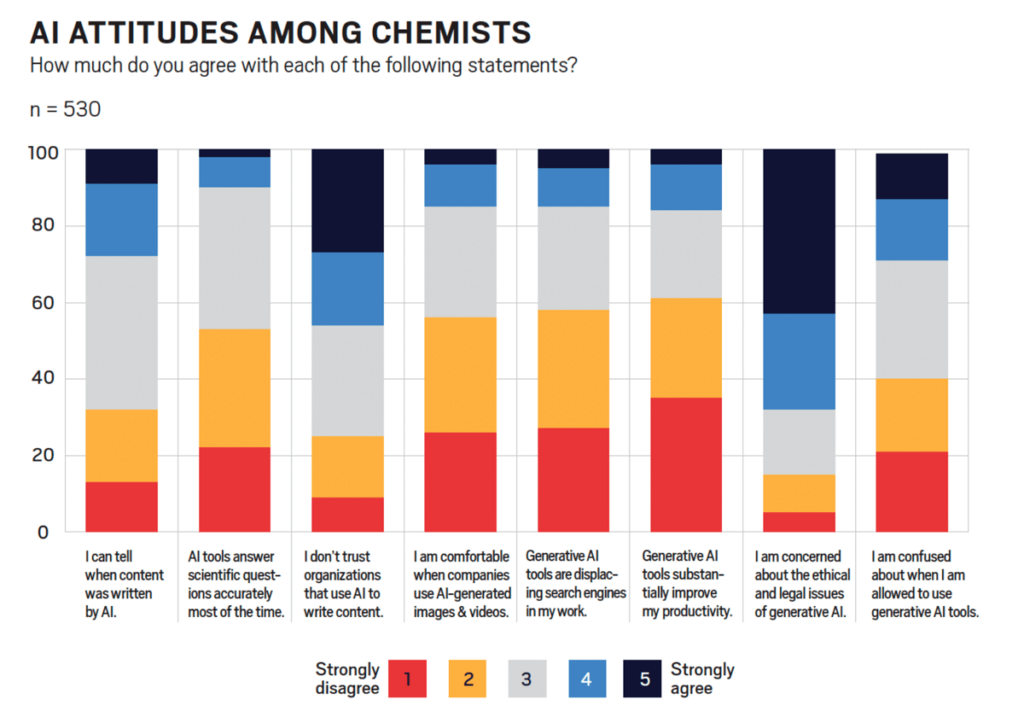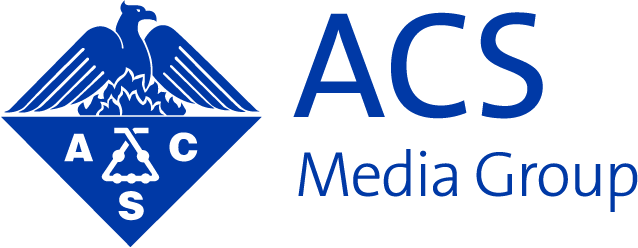You probably already know this, but generative AI is the most important technology trend in the world right now. No matter where you look — music, politics, education — AI is changing our lives. The chemical sciences are no exception; it seems like every science company is either marketing AI products or helping others take advantage of AI tools.
However, marketers should not get swept away by the hype. Whenever there are big changes in the culture, it’s important to truly understand how your audience is reacting. For science marketers, it’s important to recognize that in the case of generative AI, some scientists are curious and excited, but many others are skeptical. Chemists and life scientists are also often suspicious of new technologies that could disrupt existing workflows.
If you are like many other science marketers, you are probably trying to figure out how to navigate this new landscape. How should you market AI-related products to scientists? Should you jump on the bandwagon, or ignore the hype? While there is no universal playbook on marketing AI to scientists, there are several effective strategies to consider. But before we get into that, let’s review how chemists feel about AI today.
Scientists are AI Skeptics
Some people think all scientists love innovation and always chase the next big thing. Their entire job is about discovering the new, right? Obviously, they must want the latest tech to accelerate progress!
However, reality is more complicated. Scientists often want to stick to methods that they know work. Adopting new technologies requires extensive testing and validation. Regulators also prefer that researchers use well-established methods. Plus, the latest innovations often come at a price premium, and many scientists (especially in academia) have limited budgets to spend on unproven tools.
How does this apply to AI? BrandLab ran a survey in 2024 that asked chemists about their opinions about this technology. 75% of chemists use generative AI chatbots once a month or less for work or research related purposed. Only 16% felt these tools significantly increased productivity. Over two-thirds are worried about the legal and ethical issues surrounding AI, and many are distrustful of companies that use AI to create marketing content.

The message here is clear: many researchers in the chemical sciences are skeptical of AI. Companies that “AI-wash” their marketing could be turning off potential buyers.
Given this landscape, should marketers stop selling AI to chemists? No, but you need to be strategic in your positioning of AI-related products or offerings. Here are three approaches to consider.
Strategy 1: Lean into Innovation and AI
While most chemists are either skeptical or indifferent about AI, approximately 10-15% of chemists are excited about AI and are actively looking for ways to apply it to their work. While 10-15% isn’t a large proportion, that is a big enough segment to target.
Why would you go after a smaller segment? Marketing is not about kinda sorta satisfying everyone — you need to get people excited enough to actually to buy your product! By focusing on “early adopters,” you can attract enough customers to fuel your business. You can worry about appealing to the masses once your product is more mature.
However, many other companies are chasing this small segment. Even if you don’t have any direct competitors for your product, every dollar of budget and second of attention will be heavily contested. Your marketing should reflect this: embrace bold thought leadership, a distinct branding identity, and attention-grabbing activations.
Who should use the “Lean into Innovation” strategy?
- AI is built directly into your product.
- You are selling to computational chemists or another technologically savvy demographic.
- You work at a start-up and want to lean into the “innovative” reputation.
- Your average deal size is small, so purchases are rarely made by committee.
- You are comfortable with bold brand identity and thought leadership.
To be truly effective at this strategy, you need to have strong connections with early adopters. What are they passionate about right now? How does your company fit into the latest trends? Where are they getting information? Catching the right wave can lead to big wins.
Strategy 2: AI is a Tool, not a Benefit
While there is plenty of interest and excitement around AI, that doesn’t mean you must feature it heavily in your marketing materials. Think about it: how many “internet-enabled” or “electricity-enabled” products do you own? Do they advertise that fact?
Also, just because your product uses AI in some capacity doesn’t mean it is an “AI product.” For example, if you are selling a specialized material that happens to be designed with the help of generative AI, does your customer care? This is particularly important when marketing AI to scientists, who may be skeptical about superficial connections to AI.
Downplaying the role of AI is especially helpful for expensive products that are bought through large buying committees. If anyone on that committee worries about AI’s legal or regulatory risks, your sale might be in trouble. While you should not lie about your use of AI, you don’t need to draw undue attention to it either.
Who should use the “AI is a Tool, not a Benefit” strategy?
- You work at a mature company that has a reputation for reliability.
- Your product was created using AI but does not include AI as part of the product. For example, you sell materials designed using AI, but you do not sell the AI technology.
- You sell a high-priced product that involves a large buying committee.
- You sell into traditional or risk-averse organizations, such as government agencies.
One of the benefits of this approach is you don’t need to compete as directly with the AI hype beasts with your messaging. Let the start-ups (and the start-up wannabes) jockey for the attention of the chemists that are into generative AI.
However, “our product uses AI, but we don’t talk about it” is not a compelling message. You need another story to share with your potential customers – what value does your product offer? Positioning around reliability, quality, and experience might offer a good contrast to other firms.
One example of a company using this approach is Schrödinger — read about their business strategy.
Strategy 3: Why Not Both? Targeted Marketing

What if you could have your cake and eat it too? Could you capitalize on AI hype for those excited about innovation while offering alternative positioning to other stakeholders?
This is possible, but it’s not easy. First, you must identify potential customers that fall into each group. Next, you must create ads, content, and other resources targeted to both groups. You will then need to deploy your assets to each segment, identifying channels to target different personas. Your analytics team will also need data that is fine-grained enough for you to tell how each campaign is performing.
In theory, this could be extremely effective, but if done incorrectly, your messaging will be an incoherent mess. Laboratory researchers might get emails about cybersecurity, and IT would get white papers about experimental methods. Your marketing team would be working hard but would not generate impact.
This strategy is best suited for large organizations with mature marketing teams. Sticking to one clear positioning for one clear audience is a more reliable approach.
Who should use the “Targeted Marketing” strategy?
- You have an experienced and well-resourced marketing operations team.
- You can create content, trade show collateral, and ads to address the needs of multiple customer personas.
- Your sales and marketing team work closely together.
- Your product includes some AI features but does not rely on generative AI for all use cases.
Marketing in a Time of Change
No matter your strategy, you must be attentive and agile. Generative AI is still a relatively new technology, and attitudes are not yet set. Breakthrough inventions or geopolitical events could influence the opinions of chemists and life scientists in surprising ways!


















